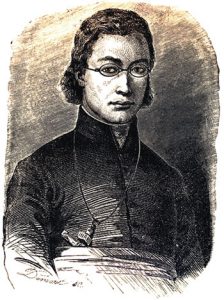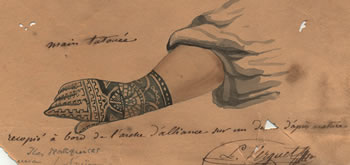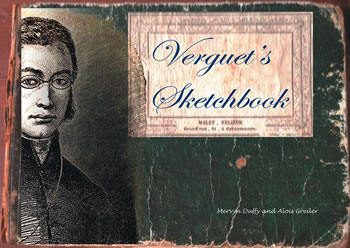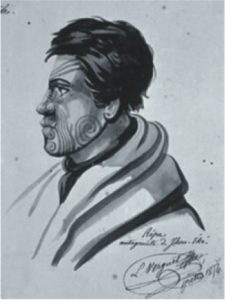Centenary of the Death of a Missionary Artist
On 19 January 1914 in Carcassonne in the South of France a diocesan priest died. He was Fr Clair Marie Léopold Verguet, and he had lived there a long time, being born in the town 97 years earlier in 1817. He had a reputation as the first photographer of Carcassonne, he was an honorary Canon of the Cathedral and a Knight of the Holy Sepulchre. He had been a member of the Society of Arts and Sciences of Carcassonne and was a corresponding member of the Oriental Society (an organisation similar to the American National Geographic Society).
Fr Léopold Verguet left behind a curious collection of artefacts from the South Pacific because he had not stayed in Carcassonne throughout his long life. In his youth, as a newly ordained priest, he had joined the Society of Mary and spent three years as a missionary in the South Sea Islands.
Despite being short, his missionary career was eventful. He was part of the eleventh group of Marist missionaries to set out. They were the first team sent to the Solomon Islands, then part of the diocese of Melanesia. They were led by Bishop Jean-Baptiste Epalle who, as a priest, had worked for four years in the New Zealand mission on the Hokianga and in the Bay of Islands.
The mission to Melanesia started disastrously when Epalle was mortally wounded on their third day of contact with the tribes on Santa Isabel on 16 December 1845.
Verguet, who was a talented artist, recorded the scene of the attack, drew the Bishop on his deathbed and mapped where they buried him. This enabled Epalle’s remains to be recovered 55 years later and positively identified on the basis of Verguet’s sketch of exactly what wounds he had received.
Despite the death of their leader and the wounding of other members of the party, the missionary group established themselves on what is now the island of Makira.
Verguet worked there for a year, trying to win the confidence and friendship of the locals. He struggled with learning the language – there were no dictionaries or grammars available. He used his art as a way to build up vocabulary lists – drawing something and asking about the words associated with it.
He and his fellow missionaries also suffered badly from malaria which was endemic in the area.
When Fr Jean Georges Collomb arrived in the Solomons early in 1847 to be the successor of Epalle he evaluated the situation and accepted Verguet’s request to leave the island to recover his health.
Collomb went to Sydney, seeking a Bishop to ordain him. Bishop Polding was absent in Europe, as was Bishop Pompallier so Collomb went to the Bay of Islands where Bishop Viard ordained him to the episcopacy. Verguet went along, sketching all the way.
Verguet, with health restored, opted to continue as a missionary but asked to be sent somewhere that wasn’t malarial.
Bishop Collomb took him to join the New Caledonia mission. Unfortunately their arrival with a considerable quantity of supplies triggered an attack on the Mission Station. The Chapel was burnt, Br Blaise Marmoiton killed and the station abandoned. They spent nearly a month under siege at a nearby mission house until a French warship arrived and they abandoned the New Caledonia mission.
At this point, rather understandably, Verguet chose to give up being a missionary and return to France to resume his life as a diocesan priest.
Through all this journeying Verguet kept with him a sketchbook in which, with pencil and watercolours, he recorded scenes, flowers, birds, maps and people. It is an extraordinary record of first contact between Europeans and Melanesians.
This year, in late October, a “coffee table” book is being published which reproduces much of the sketchbook and tells the story of Léopold Verguet and his confreres. Look out for Verguet’s Sketchbook: A Marist Missionary Artist in 1840s Oceania by Mervyn Duffy and Alois Greiler. We plan to advertise it through the Marist Messenger.




 Entries(RSS)
Entries(RSS)